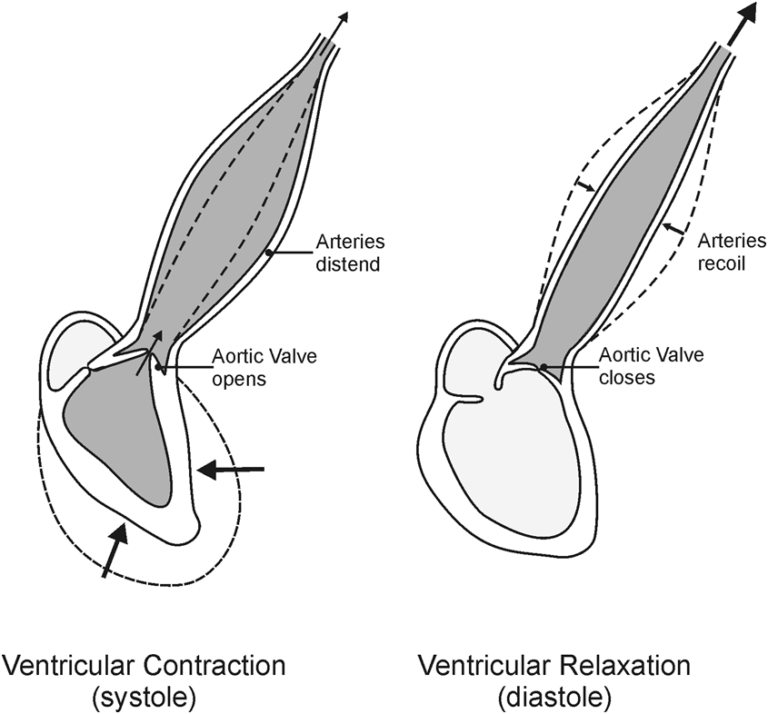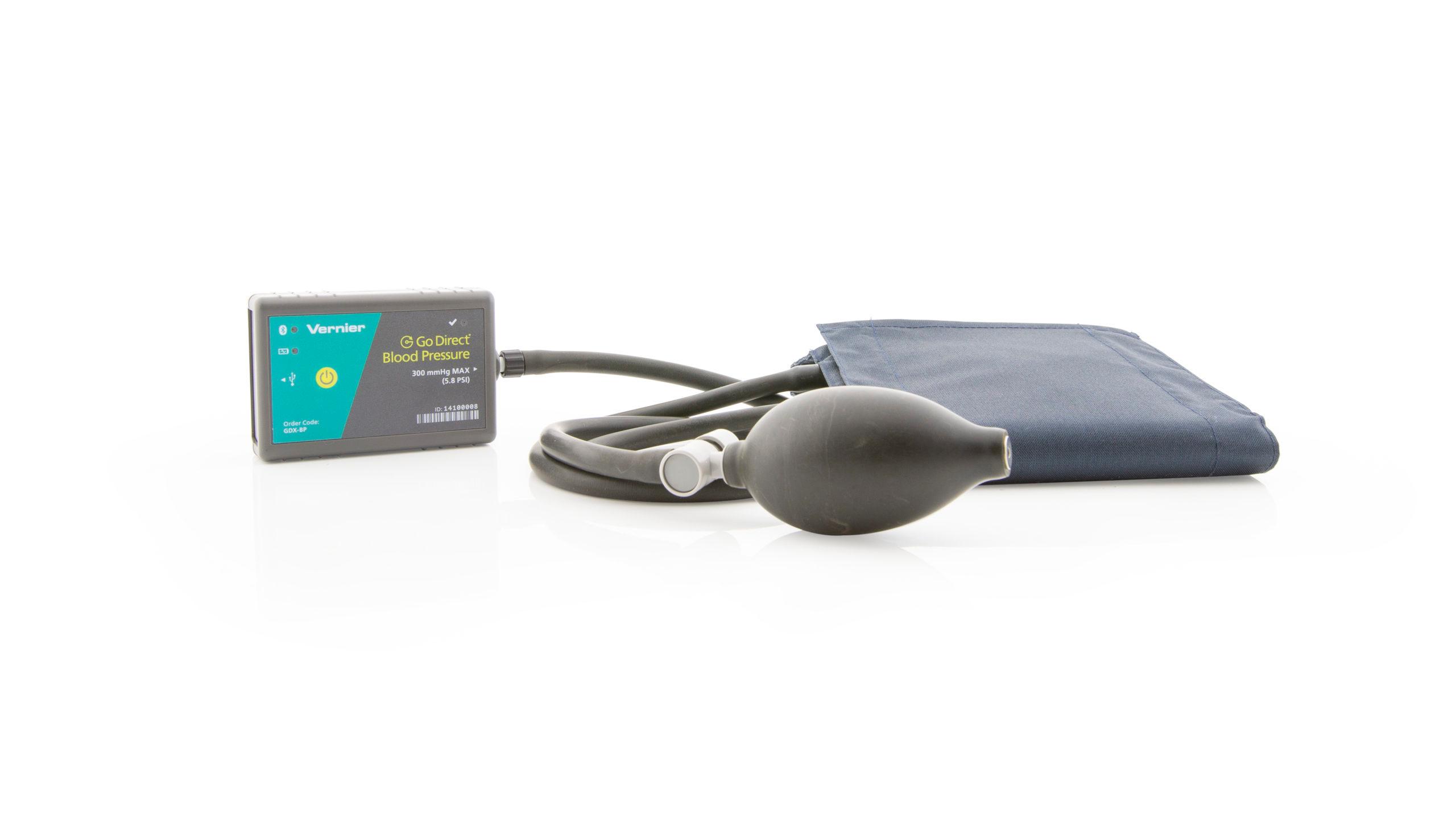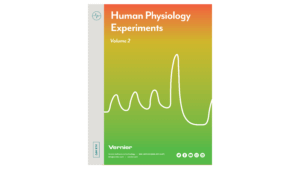
Introduction
Blood pressure is a measure of the changing fluid pressure within the circulatory system. The peak pressure occurs during systole, the period when the ventricles of the heart contract to pump blood into the arteries (the left ventricle is much larger, producing much higher pressure to push blood into the systemic circulatory system, while the smaller right ventricle pushes blood into the lungs at a lower pressure). This peak pressure from the left ventricle is called systolic pressure. When the heart is fully relaxed and filling with blood, a period called diastole, the pressure that is maintained is called diastolic pressure.
Mean arterial pressure (MAP) is not a simple average of the two pressures, because the duration of diastole is twice that of systole. MAP can be reasonably approximated using the equation
MAP is used by emergency room and intensive care unit personnel as a measure of the adequacy of blood supplied to vital tissues (such as the brain, heart, and kidneys) when the blood pressure is dangerously low.
Blood pressure is traditionally reported with the systolic pressure stated first and the diastolic pressure stated second. In adults, 120/80 and below is considered normal blood pressure. High blood pressure is 140/90 or above. The seriousness of low blood pressure, as well as the health risks of high blood pressure (also called hypertension), have been elucidated over the past several decades. High blood pressure is a major risk factor for a number of health problems including strokes and congestive heart failure. Diet and exercise are beneficial, but many people require medication for optimal blood pressure control.
In this experiment, you will examine your blood pressure using a blood pressure sensor. You will compare blood pressures taken before and after exposure to cold. The cold stimulus activates the sympathetic nervous system, resulting in hemodynamic changes that prepare the body for an autonomic reflex known as a “fight or flight” response (i.e., when fighting or running from danger). Autonomic reflexes are mediated via the autonomic nervous system, which operates mostly unconsciously to control bodily functions such as digestion, heart rate, urination, respiratory rate, blood pressure and more.
The sensitivity of blood pressure to external or internal injuries and noxious stimuli makes it useful in clinical settings as a vital sign, an indicator of health, disease, excitement, and stress.
Important: The equipment used in this experiment is for educational purposes only and should not be used to diagnose medical conditions.
Objectives
- Obtain graphical representation of blood pressure.
- Compare blood pressure before and after exposure to cold stimulus.
- Observe an example of sympathetic nervous system activation (“fight or flight” response).
Sensors and Equipment
This experiment features the following sensors and equipment. Additional equipment may be required.
Correlations
Teaching to an educational standard? This experiment supports the standards below.
- International Baccalaureate (IB) 2025/Biology
- B3.2.3—Adaptations of arteries for the transport of blood away from the heart
- B3.2.15—Adaptations of the mammalian heart for delivering pressurized blood to the arteries
- D3.3.1—Homeostasis as maintenance of the internal environment of an organism
- D3.3.2—Negative feedback loops in homeostasis
Ready to Experiment?
Ask an Expert
Get answers to your questions about how to teach this experiment with our support team.
- Call toll-free: 888-837-6437
- Chat with Us
- Email support@vernier.com
Purchase the Lab Book
This experiment is #1 of Human Physiology Experiments: Volume 2. The experiment in the book includes student instructions as well as instructor information for set up, helpful hints, and sample graphs and data.


